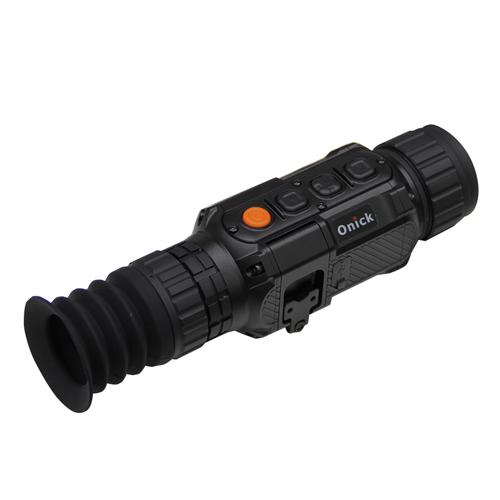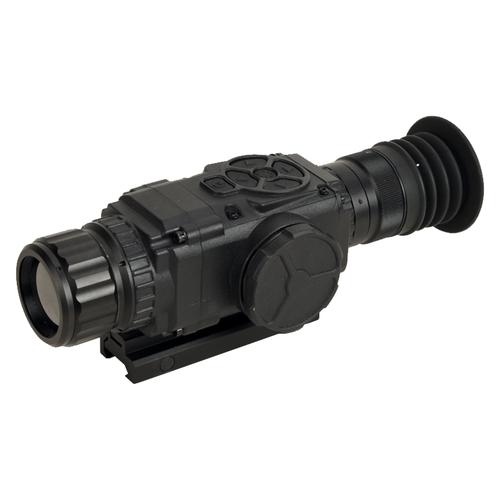Thermal imaging scopes and infrared observation scopes, thanks to their unique infrared detection technology, have become indispensable equipment in hunting, military, and security fields. They overcome limitations such as lighting and weather, allowing users to accurately observe targets in complex environments, playing a vital role.
Thermal Imaging Scopes: Core Equipment for Precision Strike
Core Functions: Assisting Precision Aiming
The core of thermal imaging scopes lies in their ability to convert a target's heat distribution into a clear image, enabling accurate target identification and lock-on even in harsh conditions such as complete darkness, thick smoke, and fog. High-resolution thermal imaging sensors, such as 384×288 and 640×512, clearly capture target details, allowing users to easily discern the target's outline, posture, and other information.

Most thermal imaging scopes offer multiple aiming modes, such as crosshairs and dot sights, allowing users to switch between them according to their needs. Some high-end products also feature intelligent ballistic calculation, automatically adjusting the aiming point based on factors such as distance and wind speed, greatly improving shooting accuracy. For example, a certain brand of thermal imaging scope has a built-in laser rangefinder module that can quickly measure target distance and, combined with ballistic data, adjust the aiming line in real time, enabling accurate hits even at long range.
Application Scenarios and Key Roles
In hunting, thermal imaging scopes are an excellent aid for nighttime hunting. They allow hunters to locate and accurately aim at prey from a distance without disturbing the prey, improving both efficiency and safety. In the military, thermal imaging scopes are crucial equipment for individual combat and sniping missions, helping soldiers locate hidden enemies and achieve precise strikes in complex battlefield environments. Furthermore, thermal imaging scopes play a vital role in security missions such as counterterrorism and border defense, helping law enforcement officers quickly locate targets and effectively handle emergencies.
Infrared Thermal Imaging Observation Scopes: A Powerful Tool for All-Around Observation
Functional Features: Expanding Observation Field
Infrared thermal imaging scopes are primarily used for all-around, long-term observation and surveillance of targets. Also based on infrared thermal imaging technology, they convert infrared light emitted by an object into a visible image, regardless of lighting conditions. Compared to thermal imaging scopes, infrared thermal imaging scopes typically offer a wider field of view and a longer observation range, making them more suitable for monitoring large areas.

Many infrared thermal imaging scopes are equipped with video recording and photo taking functions, allowing real-time recording of observed images for subsequent analysis and research. Some also support wireless transmission, allowing real-time transmission of observed images to other devices, enabling remote monitoring and collaborative work. For example, one infrared thermal imaging scope can connect to a mobile phone or computer via Wi-Fi, allowing users to view the observation image in real time, track, and analyze targets from a distance.

Application Areas, Meeting Diverse Needs
In wildlife research, infrared thermal imaging scopes help researchers observe the behavior and activity patterns of animals without disturbing their normal lives, providing valuable data for scientific research. In forest fire prevention, they can be used to monitor abnormal heat sources in forests, enabling timely detection and effective action to minimize fire damage. In power inspections, infrared thermal imaging scopes can detect heating in electrical equipment, proactively identifying potential faults and ensuring the safe and stable operation of power systems. Furthermore, during search and rescue operations, it can quickly locate the heat source emitted by trapped individuals, improving search and rescue efficiency.
Although thermal imaging sights and infrared thermal imaging scopes have different functional focuses, both rely on advanced infrared thermal imaging technology and play an irreplaceable role in their respective application fields. With the continuous development of technology, their performance will be further enhanced and their application scope will be further expanded, providing strong support for precise observation and efficient operations in more fields.


